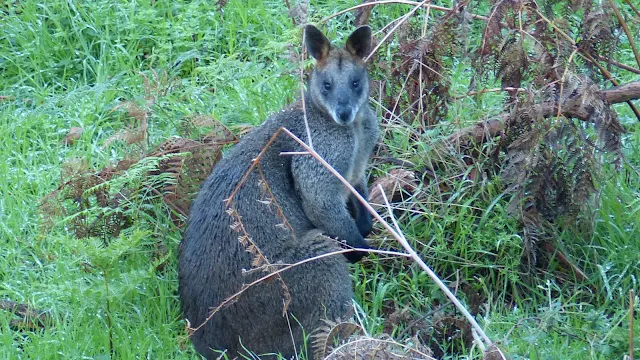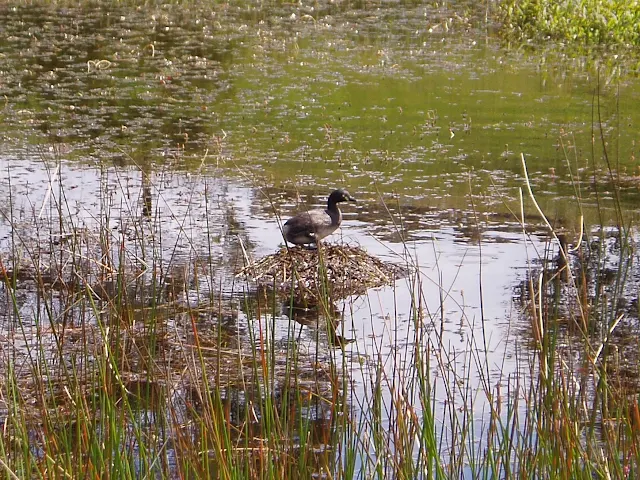Our mailbox is located some 2.5 kilometres (1.5 miles) from our home. We often walk to the box to collect our mail - the journey takes us along the gully and due to the topography, we can peruse and view the other side of the gully as we walk along the roadside. During these walks, we often witness unique and unusual events.
A while back, maybe a year or two ago, Janet and I spotted a Wallaby (Wallabia bicolor) standing on a tree that had fallen across the gully. Unusual in itself, to see a wallaby perched on a log, but more so when we noted that the wallaby was some 3 to 4 metres (9 to 12 feet) above the gully floor. We are unsure whether the wallaby was using the tree to get across the gully, or for other means, and at that time, we didn't have a camera with us so were unable to record the event.
Yesterday, on one such walk to collect mail, we once again observed a wallaby perched on a fallen tree. We were heading out, so checked to see if the wallaby was still there on the return trip and sure enough, it was. By the time we got home and grabbed the camera at least an hour had passed since our first sighting.
Fortunately, we were able to get the following shots.
The day was overcast with scattered showers throughout the day. The wind strength was 5~10 kph (3~6 mph) in exposed areas, although the wind was negligible this deep in the gully.
We went to the spot to assess the actual height and observed that the wallaby was about 1.2 metres (4 feet) above the ground, and wallaby scats were found along 4 metres (12 feet) of the tree trunk.
No, they aren't really called Arboreal Wallabies, but it does give some insight into the evolutionary link Wallabies have to the real Tree Kangaroo's found in Northern Queensland and Papua-New Guinea.
More info on the Tree Kangaroo can be found here :
http://www.tree-kangaroo.net/tkInfo.html

















































